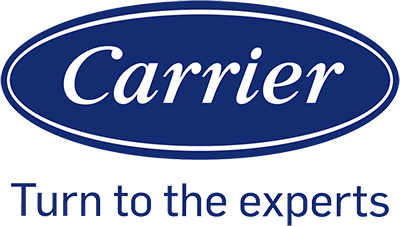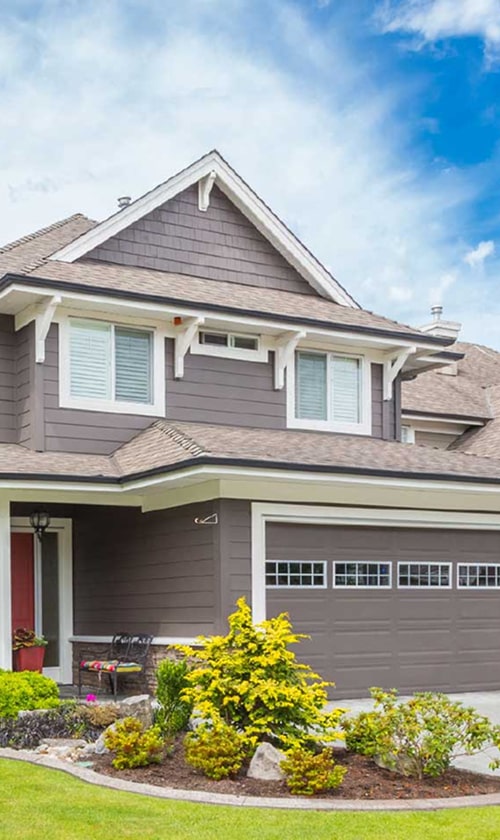Breathing clean air at home matters more than we often realize. Dust, allergens, and pollutants can build up indoors and affect how comfortable and healthy we feel each day. Upgrading our home with an indoor air quality system gives us cleaner, fresher air and a healthier living space.

When we install the right system, we take control of the air we breathe. It helps reduce common indoor issues like stale air, lingering odors, or too much humidity. This upgrade not only improves comfort but also supports long-term well-being for everyone in the home.
As we explore how these systems work, what benefits they bring, and how to choose the right one, we’ll see why this step is a smart investment. With the right setup and proper maintenance, we can keep our indoor air at its best year after year.
Understanding Indoor Air Quality System Installation
We improve indoor air quality by using systems that clean, filter, and balance the air inside our homes. These systems often work with our HVAC system to remove pollutants, control humidity, and keep air moving efficiently.
What Is an Indoor Air Quality System?
An indoor air quality (IAQ) system is equipment designed to make the air inside our home cleaner and healthier. It reduces dust, allergens, mold spores, and other airborne particles that affect comfort and health.
These systems can include air purifiers, humidifiers, dehumidifiers, and ventilation units. Each part targets a specific issue, such as removing pollutants or balancing moisture levels.
We often connect IAQ systems to our HVAC system so they work throughout the entire house. This way, the air in every room benefits from filtration and treatment rather than just one area.
By installing an IAQ system, we create a controlled environment that supports both comfort and efficiency. Cleaner air also helps our HVAC system operate with less strain.
Key Components of Indoor Air Quality Systems
Most IAQ systems combine several parts to address different air quality concerns. The main components include:
- Air purifiers or filters: Capture dust, pollen, and other small particles.
- UV lights: Target bacteria and mold growth inside ductwork.
- Humidifiers and dehumidifiers: Balance moisture to prevent dryness or excess humidity.
- Ventilation units: Bring in fresh outdoor air while exhausting stale indoor air.
Each component has a clear role. For example, air purifiers focus on particle removal, while dehumidifiers reduce mold risk by controlling moisture.
When we match the right combination of components to our home’s needs, we improve comfort and reduce common indoor air problems. This setup also helps protect furniture, electronics, and even the structure of the house from moisture damage.
How Indoor Air Quality Systems Integrate with HVAC
IAQ systems usually connect directly to existing HVAC systems. This integration allows the equipment to treat air as it passes through the ducts, ensuring consistent results in every room.
For example, an air purifier may attach to the return duct. As air cycles back into the HVAC system, the purifier removes particles before the air is heated or cooled.
Humidifiers and dehumidifiers often connect near the furnace or air handler. These devices add or remove moisture as the HVAC system circulates air, keeping humidity within a comfortable range.
By tying IAQ systems into our HVAC system, we make use of the same fans and ductwork already in place. This reduces the need for separate equipment and ensures the whole home benefits from cleaner, balanced air.
Benefits of Upgrading Your Home with Indoor Air Quality Systems
Installing an indoor air quality system can improve how we feel at home, reduce harmful particles in the air, and help us save money on energy use. It also supports a healthier environment by lowering pollutants and waste.
Enhanced Home Comfort and Health
When we improve indoor air, we create a more comfortable space for daily living. Systems that filter and circulate air help regulate humidity, remove odors, and keep rooms feeling fresh. This makes it easier to relax and sleep without discomfort from stale or stuffy air.
Clean air also supports our health. By reducing mold spores, dust, and pet dander, we lower triggers for asthma and allergies. Families with children or elderly members benefit most since they are often more sensitive to poor air quality.
Some systems also detect harmful gases like carbon monoxide and nitrogen dioxide. These gases are invisible and odorless but can cause serious health problems if left unchecked. Having reliable monitoring in place gives us peace of mind.
Energy Efficiency and Cost Savings
Indoor air quality systems often work with heating and cooling equipment to improve efficiency. When air filters and ventilation systems are clean, our HVAC units do not need to run as long or as hard. This reduces energy use and extends the life of the system.
Lower energy use also means lower utility bills. Even small improvements in airflow and humidity control can lead to noticeable energy savings over the course of a year.
Some systems include smart controls that adjust air circulation based on occupancy or air quality levels. This prevents wasted energy while still keeping the home comfortable. By investing in efficient equipment, we reduce both operating costs and maintenance expenses.
Reduction of Allergens and Pollutants
Air quality systems target common indoor pollutants that affect our health and comfort. They filter out dust, dust mites, pollen, and mold spores that can trigger allergies and breathing problems.
Volatile organic compounds (VOCs) such as formaldehyde, often released from furniture, paint, or cleaning products, are also reduced. These chemicals can cause irritation and long-term health concerns.
High-quality filters and purification systems also help trap smoke particles and reduce odors. By removing these pollutants, we maintain a cleaner indoor environment that feels safer and more pleasant for daily living.
Environmental Impact and Sustainability
Upgrading to an indoor air quality system also supports sustainable living. By improving energy efficiency, we use less electricity and natural gas, which lowers greenhouse gas emissions.
Better air circulation and filtration reduce the need for chemical sprays or air fresheners, which often release VOCs into the air. This helps limit the release of harmful substances into the environment.
We also cut down on waste by extending the lifespan of HVAC equipment. When systems run efficiently, fewer repairs and replacements are needed, which reduces the demand for new materials and manufacturing. This creates a long-term benefit for both our home and the environment.
Choosing and Installing the Right Indoor Air Quality System
We need to match the right system to our home’s layout, existing HVAC setup, and air quality goals. This includes checking airflow, ductwork condition, and how well the system can integrate with heating, cooling, and smart controls.
Assessing Your Home’s Needs
We start by looking at the size of our home, the number of occupants, and any health concerns like allergies or asthma. A larger home with multiple floors may require stronger filtration or zoning to balance airflow.
An energy audit helps us understand leakage, insulation levels, and how the stack effect impacts indoor air. This tells us if air is escaping through ducts or walls, which reduces efficiency.
We also check existing HVAC equipment such as a furnace, heat pump, or ductless mini-split system. The system type determines what air quality add-ons can be installed. For example, ducted systems can support media air cleaners, while ductless units may need separate filtration devices.
Moisture levels matter as well. If humidity is too high, we may need dehumidifiers. If too low, humidifiers improve comfort. These choices depend on climate and how much our air conditioning or heating runs during the year.
Types of Indoor Air Quality Systems
There are several system types, each designed for different needs. Media air cleaners use replaceable filters with higher MERV ratings to trap particles. High-MERV filters capture smaller particles but may require stronger fans to maintain airflow.
Electronic air cleaners use charged plates to attract dust and smoke. They need regular cleaning but work well for fine particles. UV light systems target bacteria and mold inside ducts. Some units combine UV lights with photocatalytic oxidation (PCO) to help reduce odors and volatile organic compounds.
We also consider range hoods in kitchens to remove cooking fumes. These are often overlooked but play a big role in reducing indoor pollutants.
When choosing, we balance cost, maintenance, and effectiveness. For example:
| System Type | Best For | Maintenance |
|---|---|---|
| Media Air Cleaner | Dust, pollen | Replace filters |
| Electronic Cleaner | Smoke, fine particles | Clean plates |
| UV Light System | Mold, bacteria | Replace bulbs |
| PCO System | Odors, gases | Replace catalyst + UV bulb |
Professional Installation and Ductwork Modifications
An HVAC contractor or licensed HVAC technician should handle installation to ensure safety and performance. They check airflow, pressure, and compatibility with our furnace, heat pump, or air conditioning unit.
Sometimes ductwork modifications are needed. Old ducts may leak, reducing the effectiveness of new filters or cleaners. Sealing or resizing ducts helps maintain proper airflow when adding high-MERV filters or multiple devices.
If we use a ductless mini-split system, the approach is different. These units don’t have central ducts, so portable or wall-mounted air cleaners may be added instead. In some cases, advanced filters can be built into the mini-split itself.
We also need to plan for maintenance access. Filters, UV bulbs, and electronic plates must be easy to reach. Poor access often leads to skipped maintenance, which lowers system performance.
Smart Controls and System Integration
Modern systems often connect to smart thermostats to improve temperature control and climate control. We can program schedules, monitor air quality, and adjust fan speeds through apps.
Some smart thermostats integrate with air cleaners, humidifiers, and dehumidifiers. This allows us to automate responses, like running a fan when indoor air quality drops.
Integration with heat pumps, ductless mini-split systems, or central air conditioning ensures balanced operation. For example, a high-MERV filter may slow airflow, so the thermostat can adjust fan speed to compensate.
We also benefit from alerts. Smart systems can remind us to replace filters, clean electronic plates, or change UV bulbs. This reduces guesswork and helps keep the system working as intended.
By combining smart controls with the right equipment, we create a balanced setup that manages comfort, energy use, and indoor air quality together.
Maintenance and Long-Term Considerations
We need to keep indoor air systems in good condition to ensure safe air and efficient energy use. Regular care helps prevent costly breakdowns, reduces energy bills, and extends the life of the equipment.
Routine Maintenance for Optimal Performance
We should schedule professional inspections at least once a year. A technician can check the HVAC unit, replace or clean filters, and test airflow. This keeps the system running smoothly and reduces strain on parts.
Filters usually need replacement every 1–3 months depending on the type and air quality. Clogged filters make the system work harder, which increases energy bills and lowers performance.
We also need to look at ductwork. Dust, mold, or debris buildup can block airflow and reduce efficiency. Cleaning ducts every few years helps maintain healthy air circulation.
If our system includes combustion appliances, such as a gas furnace, we should test for carbon monoxide leaks. This step protects against safety hazards and ensures proper ventilation.
Monitoring and Improving Air Quality Over Time
We should track indoor air quality with sensors or monitors that measure humidity, particulate matter, and carbon dioxide. These devices give us data that helps us decide when to adjust settings or add new features.
High humidity can cause mold growth, while low humidity may lead to dry air and discomfort. A humidifier or dehumidifier can balance these levels.
We should also be aware of older building materials. Lead paint and asbestos, if disturbed, release harmful particles into the air. Professional testing and safe removal are necessary if we suspect these materials are present.
Simple steps like vacuuming with a HEPA filter, using exhaust fans in kitchens or bathrooms, and sealing leaks around windows also improve air quality over time.
Repair Costs and System Longevity
Repairs vary depending on the part and age of the system. Small fixes like replacing a thermostat or fan motor cost less, while major repairs such as compressor replacement can be expensive.
We should budget for both routine maintenance and unexpected repairs. Preventive care often lowers long-term repair costs by catching problems early.
The lifespan of most HVAC units ranges from 10 to 15 years. Regular servicing, timely filter changes, and safe operation of combustion appliances can extend that timeline.
When repair costs start exceeding half the price of a new system, replacement usually makes more financial sense. Keeping records of service visits helps us make informed decisions about when to repair or replace.




